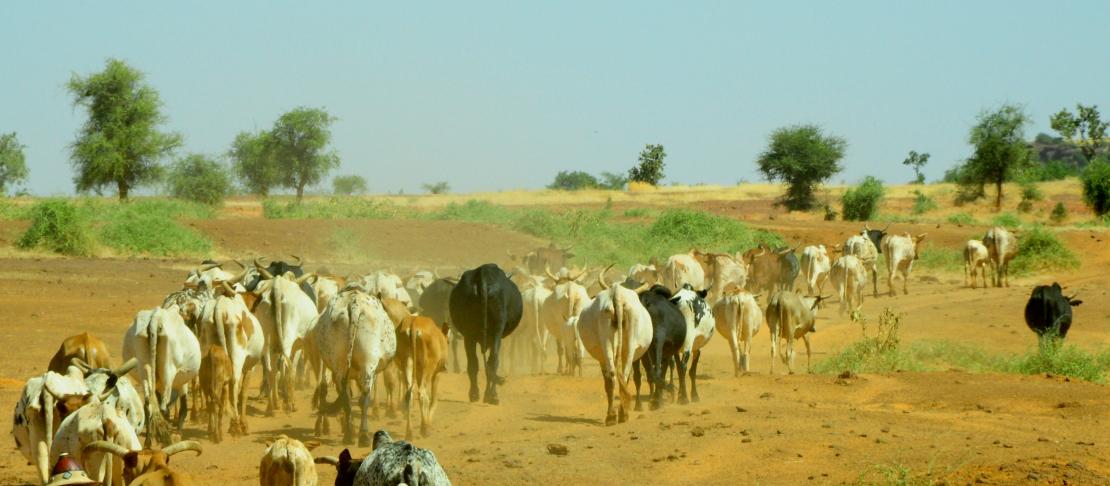Flipping the issue: Agriculture contributes to climate change?

Agriculture is one of the main contributors to climate change, however it can also be harnessed to mitigate greenhouse gas emissions.
Did you know that the burgers and rice you eat contribute to climate change?
Climate change is usually pictured as the bane of agriculture. Increased flooding, drought and stronger typhoons make agriculture production harder for farmers than it already is. Because of climate change, farmers get lower yields and incomes, thus negatively influencing market prices and burdening the consumers.
We should also look at the other side of the equation. Let us examine how agriculture and food production contribute to climate change.
Greenhouse gases (GHGs), which trap heat inside the earth, are not inherently bad because they help keep the earth warm enough for living beings to survive. What is dangerous is the excess GHG emissions generated by human activities. While most people know GHGs are emitted from the use of fossil fuels and industrial production, some are unaware that agriculture is a major contributor.
GHG emissions from agriculture
Countries are increasingly recognizing the contributions of agriculture to climate change. Of the 133 Intended Nationally Determined Contributions of the 160 Parties to the United Nations Framework Convention on Climate Change (UNFCCC), 103 target to reduce GHG emissions from agriculture.
The agriculture sector was the second largest emitter in 2011. It is estimated around 10-12% of total annual GHG emissions and 75% of global deforestation come from agriculture, mostly in developing countries. Southeast Asia (SEA) emits almost 315-627 million tons of carbon dioxide equivalent (MtCO2e) annually, with Indonesian agriculture as the largest contributor (84-247 MtCO2e).
In general, livestock contributes a large part of the agricultural emissions. According to the United Nations Food and Agriculture Organization (FAO), around 40% of agricultural emissions came from methane produced by livestock between 2001 and 2011, not including emissions from manure (25% of agricultural emissions).
The use of synthetic fertilizers contributes 13% to agricultural emissions worldwide. Rice paddy fields emit methane through decomposing organic matter in the fields and contribute 10% to agricultural emissions. Other agricultural activities, such as burning vegetation biomass and cultivating organic soils, emit lower amounts of GHGs.
Lowering emissions from agriculture
Mitigation does not necessarily mean reducing agricultural production to lessen GHG emissions. In fact, food production should be boosted to feed the ballooning global population, which is predicted to reach 9 billion in 2050. How do we ensure food security without increasing GHG emissions?
One option is climate-smart agriculture (CSA). The three pillars of food security, climate change adaptation, and mitigation define CSA, according to FAO. CSA contributes to food security by sustainably increasing yields of farmers, while promoting resilience of communities.
The CGIAR Research Program on Climate Change, Agriculture and Food Security (CCAFS) in SEA supports a number of projects focused on lowering GHG emissions from agriculture. The International Food Policy Research Institute (IFPRI), with Vietnam’s National Institute of Agricultural Planning and Projection and the Institute of Agricultural Environment (IAE), is building support systems for CSA initiatives through the 'Landscape Approach to Climate Change Mitigation in Agriculture' project. Researchers will identify possible landscape developments and analyse whether mitigating measures could be adopted to increase resilience of production systems.
A project led by the International Rice Research Institute (IRRI), 'Assessing incentives for scaling up mitigation at different stakeholder levels: ‘No-regret’ mitigation strategies in rice production', will develop an innovative approach highlighting the co-benefits of mitigation options. The alternate wetting and drying (AWD) technique, which reduces water use by 30% and methane emissions from rice production by 50%, will be integrated into farming systems. This is in partnership with Vietnamese institutions including Can Tho University, Cuu Long Rice Research Institute and IAE.
IRRI is also leading a project with the Climate and Clean Air Coalition (CCAC) called 'Mitigation strategies in paddy rice production: Support for national partners in CCAC project' on scaling out mitigation strategies, specifically AWD, in Vietnam, Bangladesh and Colombia.
Mitigation and adaptation, hand in hand
Clearly, agriculture should not only be about climate change adaptation, but also mitigation of emissions. Adaptation is not enough, for without mitigation, changes in climate will continue and may worsen if it remains business-as-usual.
According to the Fifth Assessment Report of the Intergovernmental Panel on Climate Change, “Without additional efforts to reduce GHG emissions beyond those in place today, emissions growth is expected to persist driven by growth in global population and economic activities.”
Mitigation, although often overlooked, should never be forgotten in addressing climate change in the present and the future. IPCC AR5 researchers also acknowledge that delays would mean greater difficulty in transitioning to activities with low emissions on the long term, and fewer options that allow for maintaining temperatures below the threshold.
Now is the time to look for mitigation options. Agriculture is an important sector with a large potential for reducing emission levels and building communities’ resilience. Let’s flip the issue and combine efforts to promote adaptation, mitigation and sustainability.
Read more:
- Creating synergies with umbrella program on climate change in SEA
- Climate change and agriculture: Is it a gloom and doom scenario?
- What’s needed to safeguard agriculture under climate change?
Amy Cruz is the junior communications specialist for the World Agroforestry Centre Philippines. She is also a communication consultant with the CCAFS SEA program.



